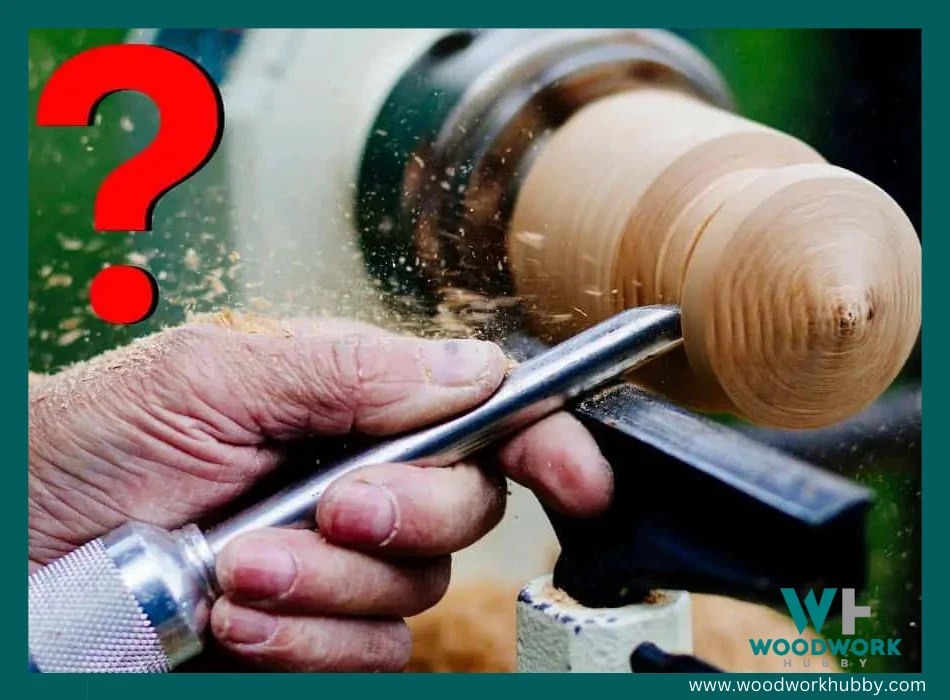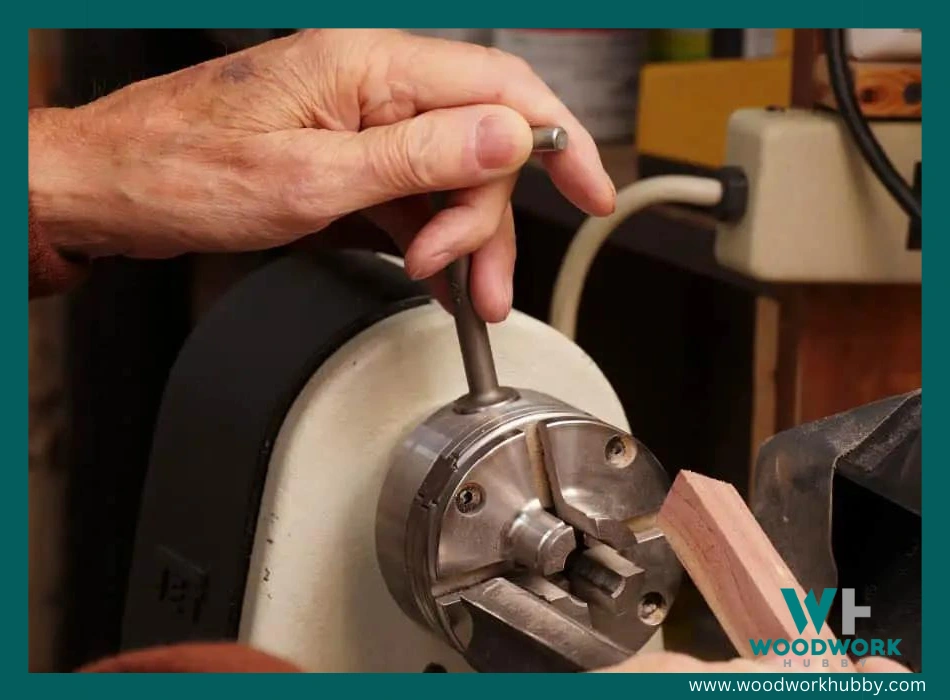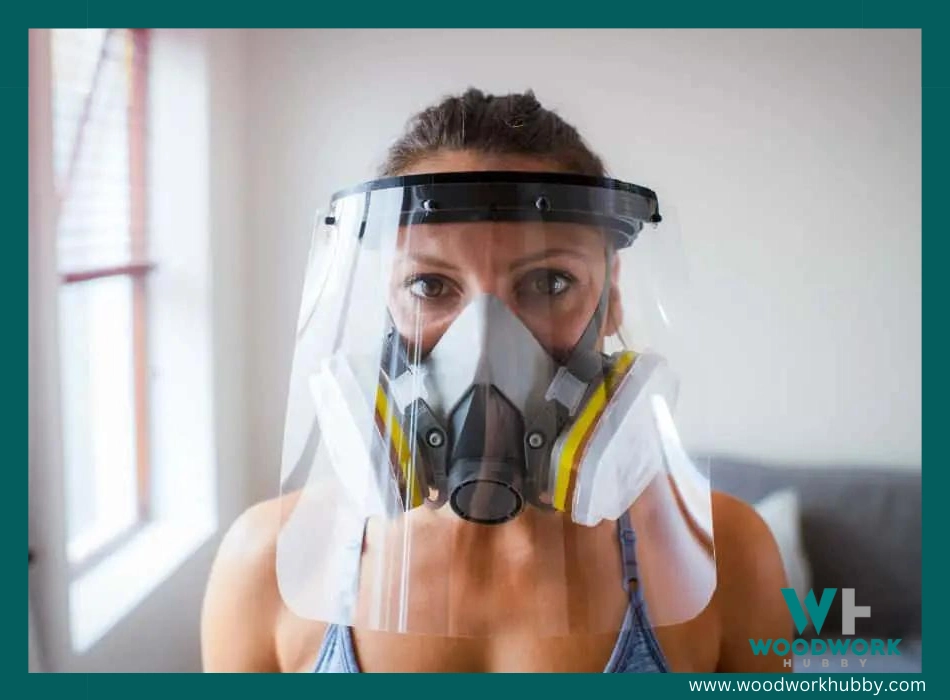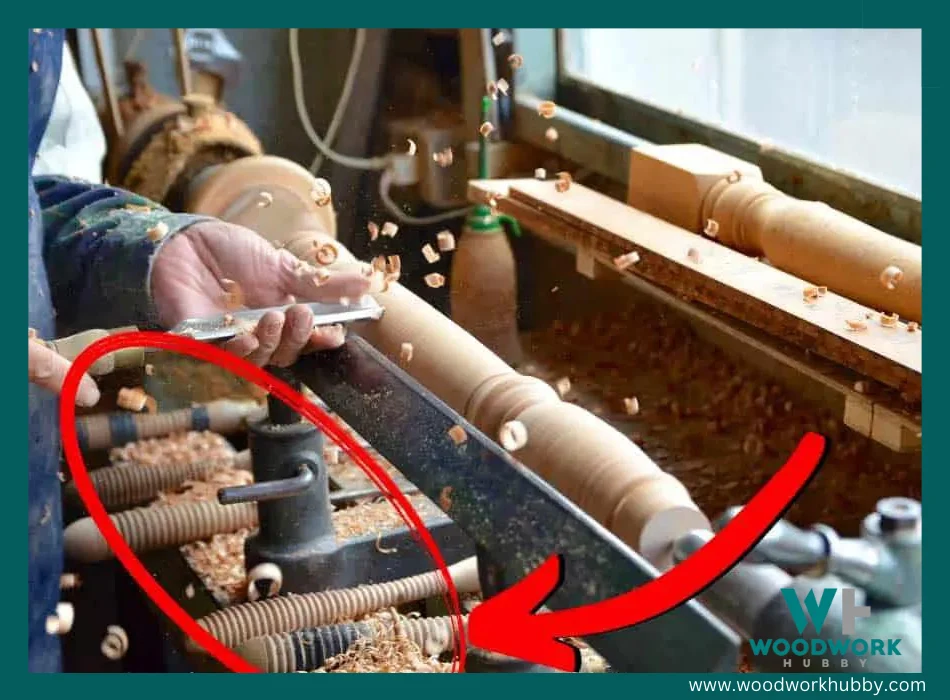A close friend has recently started his own woodworking shop and he has taken an interest in Woodturning. Knowing very little about it he recently asked me; is wood turning dangerous? I shared the following with him.
Woodturning is very dangerous and can cause injuries such as dust inhalation, allergies, bruises, deep cuts, broken bones, and in severe cases, death. Luckily most major injuries are uncommon and can easily be avoided by using the proper safety equipment and procedures.
Woodturning is a wonderful and fun hobby to get involved in and I always strongly advise beginners not to focus on the dangers. Although these seem daunting, the number of injuries from wood lathes are much less than from other machinery. Table saw have the most injuries of any tool in the woodworking shop according to the National Electronic Injury Surveillance System (NEISS).
Are Wood Lathes Dangerous?
Woodturning involves usually a piece of odd-shaped wood spinning at high speeds on its axis while you push a sharp tool towards it. What is dangerous about that? All jokes aside, I wanted to give you a brief understanding of what the dangers are before I go into how to avoid them.

Woodturning and Wood Lathes are dangerous because wood can spin at speeds up to 4,000rpm while a sharp lathe tool is used to shape it.
The following dangers are present when woodturning.
Pieces Of Wood Flying Off At You
You need to be aware that pieces of wood you mount to the lathe may have splits or cracks in them which can cause them to fly apart once they are spun at high speeds.
If the wood you are turning is incorrectly mounted, it can fly off and hit you. Believe me when I say this can cause severe bruising.
Also while you are turning, pieces of bark and sapwood do fly off at you. Usually, this is not so bad but you may sometimes get small cuts from this.
Sharp Woodturning Tools Can Hit You Or Be Dropped Onto Your Feet
In order to get a good finish in woodturning, sharp tools are essential just like any other part of woodwork.
Be very careful that these sharp tools don’t get caught up in the wood and flung back at you. When I did my training, another student did the wrong thing on the lathe and caused the bowl gouge to be flung from his hands and went through the roof which was 9 feet high!!
Sometimes losing control of your tools can cause them to drop onto your feet. This has resulted in things from minor cuts to missing toes.
Dust Inhalation
Whenever you turn wood on a lathe you are always going to get dust. This dust can be very fine and can be extremely harmful to your lungs. Some woods are even toxic.
Long-term exposure to wood dust will cause breathing difficulties and in some cases, lung cancer. Dust inhalation is one of the most common injuries from woodturning because people generally don’t realize they have inhaled so much dust.
Some turners even resort to turning outside because of this.
Allergies
This may take some time to develop or notice but some people are allergic to different types of wood dust. When you turn wood, dust, and debris settle on your arms and skin and can be irritating.
Some types of wood are more irritating than others and can cause welts and itchiness. People who are very allergic may even experience sickness because of this.
Objects, Clothing, or Hair Getting Caught In The Lathe
The wood lathe spins at high speeds and objects especially clothing can easily be caught around the wood or chuck and pull you in.
This is one of the most frightening things that could happen to you. You may simply be leaning over to grab another tool and your apron or sleeve can get caught and sucked around the spinning wood.
The outcome of this is not pretty and can result in loss of fingers or limbs. This is why all modern lathes have a shutdown button close by.
Hands Getting Knocked By Chuck
When the lathe is spinning it is very easy to misjudge where the chuck or live center is and accidentally get your hands or knuckles knocked by the chuck. This can break the skin or break a finger.

Also, a square piece of wood spinning on the lathe has corners that are very hard to see where they are. You must be careful not to catch fingers or lathe tools on these edges. The more rounded you make the wood, the more defined the edges become.
How To Avoid Injury
As you can see from the above, there are a lot of potential hazards and injuries that can arrive from woodturning. Luckily just by using a few safety precautions, most can easily be avoided.
The below methods are what I would normally do when I am about to start turning which can avoid all of the above injuries.
- Pieces of wood Flying off – Before mounting your wood onto the lathe, be sure to thoroughly check it for cracks and splits which may cause it to break. Also, inspect the grain direction which may help you in the turning process. Any cracks or splits could be cut out or filled with epoxy prior to turning.
- Tool Safety – Make sure you press woodturning tools down onto the tool rest with the other hand over the top of it. Slowly bring the bevel in towards the wood and raise the tool until it starts to cut. Always ensure you make small light cuts and hold the tool firmly. Protective footwear is a must just in case.
- What to do about dust – Whenever you do woodturning I always recommend a full face shield and a dust mask. You could get away with a basic dust mask but these do not filter very well and are uncomfortable. I highly recommend a face mask and respirator all in one like this. You also need to make sure you have adequate dust extraction hoods to remove air-borne dust and shavings.
- Allergies – Are you allergic to dust or pollen? This could be a telltale sign if you may have any reactions to wood shavings and dust. You should always wear a woodturner’s apron and wear a long-sleeved shirt with tightly buttoned sleeves. Another great tip for sleeves is to use rubber bands around your wrists.
- Stop hair or clothing getting caught – Whenever working around any type of machinery, long hair needs to be tied up short and any loose clothing should be removed or tightened up. This might seem obvious but is usually overlooked when we plan to rush a job through.
- Avoid the chuck or spindle – When woodturning you always need to be alert and think of where your hands are at all times. If you are known to go too close to the chuck or live center, maybe build a guard to keep your hands away.
The below video shows you what safety steps to take to avoid injury.
What Safety Equipment Is Needed When Woodturning?

The below items are a MUST if you are wanting to start woodturning safely.
- A woodturners frock or apron with tight-fitting sleeves
- A full-face shield NOT glasses
- A dust mask or even better a respirator
- Hearing protection
- Tie back hair or lose clothing
- Remove all jewelry
- Don’t wear gloves
- Use safety guards if your lathe has them
- Use Proper dust extraction to remove excess shavings and dust
How To Do Woodturning And Be Safe Every Time
During my years using a wood lathe I have developed a bit of start-up procedure to ensure that every time I use the lathe, I enjoy it and I walk away injury-free.
This start-up procedure is just as important as using the right safety equipment so please be sure to check this over.
I highly recommend you use this start-up procedure to avoid injury.
- Thoroughly examine your workpiece before mounting it to the lathe to ensure there are no cracks or splits that could fly apart.
- Mount the workpiece and ensure it is secured properly.
- Ensure the tailstock is securely locked in place if you are using it.
- Move the tool rest up to the piece of wood and lock it in place. I recommend keeping the tool rest within 1/2 inch of the wood.
- Turn the lathe by hand a few times to ensure the wood does not foul on any part of the lathe or the tool rest.
- Fix any guard in place that your lathe may have.
- Ensure that you are wearing all protective items as outlined above.
- Position all dust extraction ports around your workpiece.
- Check that the lathe speed is down low to start off. Large-diameter items require a low speed while small-diameter items can handle a faster speed. Some lathes have a soft start feature which means they turn slowly at the start before speeding up.
- BEFORE STARTING your lathe, stand to one side of the wood being turned. Right in front of your workpiece is known as the Red Zone. Stay away from the Red Zone until your lathe has started properly. If the workpiece is spinning fine then it is safe to stand in front of it to start turning.
- Start your lathe and ensure the workpiece is turning free. If your lathe has any vibrations or shaking, stop the lathe and double-check how your workpiece is mounted. Keep in mind out of round and odd-shaped pieces may wobble a bit at the start but this is perfectly normal.
- Before you introduce a tool to the wood, be sure you are holding it firmly with both hands. I also recommend your bottom hand be at the end of the handle and lock it in beside your hip to give you the most control. Make sure the tool is firmly rested on the tool rest before it contacts the wood.
- Only start introducing the tool once you are comfortable and make very light cuts to begin.
If you use this exact start-up method I use, then your turning experience should be fun and incident-free. The more you turn the more confident you will become but it’s always important to follow the same start-up procedure so you don’t become complacent.
Please remember, most injuries happen when we cut corners or are not thinking properly.
Keep Your Turning Area Clean

A clean work area makes for a good tradesman. This also applies to woodturning. Once you start turning your workpiece you will start to gather many tools in front or below your lathe.
I would use a tool holder to keep your tools organized and easy to reach. One common mistake is reaching over a spinning lathe to get a lathe tool. Obviously, this is a big NO-NO and the outcome would not be good.
I regularly push any excess shavings into my dust extraction shute so that my tools don’t get buried in these shavings.
It is always a good idea to have a wide firm stance to keep your balance and to use a work mat on the floor to stand on. This provides a comfortable place to stand and is easier on your joints.
Conclusion – Is Wood Turning Dangerous?
I have been doing woodturning for more than 10 years but mostly part-time when the need arises. I am by no means an expert, but I am confident that if you follow the same safety procedures I use, you will be safe and injury free.
Woodturning is a wonderful hobby and takes up very little room in your workshop. If you are thinking about getting started, I would certainly encourage you to do so! Enjoy woodturning.




